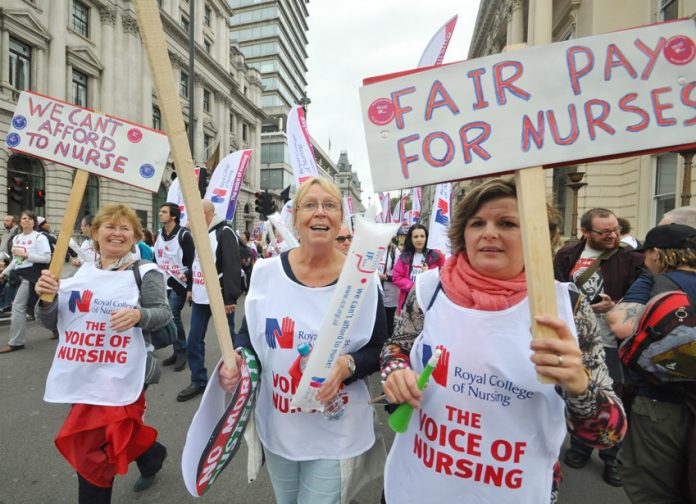THE very minimum number of nurses required for A&Es to function safely was published yesterday in an attempt to address the acute staff shortage crisis which is gripping the NHS as a result of savage cuts.
The BMA said that a ‘lack of necessary investment’ is what must be addressed if the staffing crisis is to be resolved.
NICE, the National Institute for Health and Care Excellence, published its guidance for A&E departments.
It recommends ‘Hospitals escalation plans’. These should include ‘moving patients out of the A&E department to an appropriate alternative location and sourcing extra staff (for example using an on-call system)’.
It also recommends minimum nursing levels in A&E, with a ‘maximum of one nurse per 4 patients, one for 2 patients for trauma and cardiac arrest, and one to one for resuscitation’.
It recommends that ‘hospitals will have to publish monthly data on a central NHS website’. Hospitals must also put up notices in waiting rooms asking patients to complain if there are problems like overcrowding, waiting in pain, or being hungry. These would trigger ‘red flag’ responses.
Dr Peter Carter, head of the Royal College of Nurses, said that a chronic lack of nurses could take years to resolve.
A leaked account by a senior nurse working at the Cardiff University Hospital of Wales compared the horrific daily experiences to working in military field hospitals in Iraq.
She described the constant influx of very sick patients, no space to put them and totally inadequate staffing, often with very junior nurses.
Anna Athow BMA member said: ‘Clearly the advice from NICE is impossible to implement under current management. It is simply a pretence at showing concern for a service that is being collapsed by the government.
‘This programme to crash the NHS has been consciously engineered through £20bn funding cuts and a strategy of privatisation.’
Sir Bruce Keogh, Medical Director for NHS England told MPs this week, that he expected the current problems in A&E departments to continue for up to five years.
This refers to the overwhelming crisis in A&Es up and down the country, where 17 hospitals have declared major incidents this winter.
Almost all hospitals are full to bursting with record patient attendances and admissions, and slumping targets for four-hour waits and trolley waits which have all put patients’ lives at risk.
Giving evidence to the parliamentary Health Select Committee on Tuesday, Keogh said: ‘In answer to the question “Can we tell you that next winter we will be OK?”
‘I think it would be very foolish to sit here and say this because it is part of a three- to five-year programme.’
Dr Clifford Mann, the president of the College of Emergency Medicine, reminded the panel that there had been in excess of 14 million A&E attendances since April, a rise of 446,049 compared to last year.’
However, at least 12 A&E departments have been closed or severely downgraded in the last four years, and 23,000 overnight hospital beds cut.
BMA member Anna Athow added: ‘It is of note that despite the fact that this is the biggest national crisis in emergency care since 2000, Simon Stevens the new CE of NHS England responsible for the entire English health service, did not himself attend the Health Select Committee, and has remained virtually silent on this issue throughout.
‘Yet he is very vocal on the “NHS Five-Year Forward View” which facilitates the privatisation of NHS clinical services by 2020.’
